During the last quarter of working with the leadership teams of 30 businesses, I’ve seen a total of almost one thousand issues on their Issues Lists. In the EOS business management process, these issues become prioritized as Rocks for the next quarter or we Identify, Discuss and Solve (IDS) them. Hands down, the top issue has been how to better recruit and retain talent – with the biggest influencing factor being flexibility in the workplace.
Whether your employees are returning to the office with precautions or adopting a hybrid work model, the reality is that companies must offer more flexibility in the workplace. But getting people excited about in-office work is more difficult than ever before. To avoid embarrassing missteps, here are some tips from the trenches of companies who have fought hard for their culture and won the Return-To-Office (RTO) battle:
Be Open-Minded. It’s unlikely that things will go back to how things were done pre-pandemic. Leaders must do more than set the policy and tell people about it. Today’s leaders are having to think more creatively about how to craft better in-office experiences – especially given the recruitment and retention issues in our current employment environment!
Seek Feedback. When creating your RTO approach, think about seeking feedback on how it could help build morale and performance. Consider a simple survey. Ask about what worked well when everyone worked in the office. What did employees enjoy most about being in the office? What types of meetings or tasks are best done in person? How has remote work impacted their careers? Identify activities, such as strategic planning, onboarding, one-on-one meetings and training, that have better outcomes when done in person. Similarly, identify the activities best suited for remote work, such as administrative or routine tasks, deep focus projects and short team meetings. Use this feedback to intentionally structure in-office days.
Create Alignment. Without alignment, we create coercion – and that doesn’t bode well for building culture. Given the feedback you’ve received from employees, find areas of agreement on what the future workplace experience could look like. Paint a picture of the value of being together, in person, and “reset” the in-office experience for employees.
Create the RTO Plan. Given your business model, culture and core values, find a happy medium that will appeal to the most employees – or use the exercise as an opportunity for making significant changes, like embracing a permanent hybrid work schedule.
Communicate. Leaders will build trust and transparency by sharing survey results and using employee feedback to help guide their RTO plans. When people know they’ve been heard, they are much more likely to embrace change. Communicate every step of the way – from sharing the vision and a compelling “why” for the company’s RTO plan, to rolling it out effectively and then fine-tuning it as time goes on.
Consider these RTO Tips. First, center in-office day activities around the ones that employees have told you are better in person. Then consider these ideas:
• Build time for new hires to connect with their colleagues.
• Have leaders clear their calendars and participate as well.
• Consider town halls or other sessions for leaders to provide updates on the business.
• Throw in some surprises – such as a catered lunch.
• Resist over-scheduling and leave time for people to reconnect with their peers.
• Give managers advance notice and talking points for handling objections.
• Run a periodic survey to gather feedback about what employees want more of or less of and continually fine-tune the in-office experience.
Keep in mind, it’s likely that we won’t please all of the people, all the time, and an RTO plan could trigger some departures. However, these folks may not have been a great culture fit and would have moved on at some point anyway.
Over time, new experiences will be created that will show the stark difference between being in the office or working from home. Best of all, you can begin rebuilding your culture – which is significantly impacted by having your people together. And clarity and certainty will be appreciated by your managers, who will no longer be bogged down by exceptions. Finally, your employees will be able to get on with making more definitive plans for themselves and their families.
For more information on how a flexible workplace impacts employee engagement, see: https://www.octanner.com/insights/articles/2021/10/27/_5_culture_trends_for_2022.html?utm_source=google&utm_medium=paid-search&utm_campaign=us.2022.jan.white-paper.5-culture-trends-2022&utm_source=google&utm_medium=cpc&utm_campaign=1681827816&utm_ad_group=71097809491&utm_keyword=improve%20culture%20in%20the%20workplace&utm_creative=599792856936&utm_matchtype=p&utm_network=g&gclid=Cj0KCQjw54iXBhCXARIsADWpsG9TMEjWvTt1yecB9MHYqTLwwD51F4sVpAPpjE58LQZAQOzB5Y3b9kIaAvBIEALw_wcB
